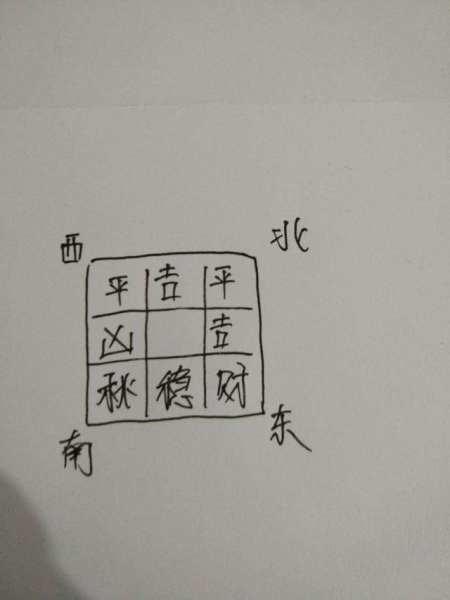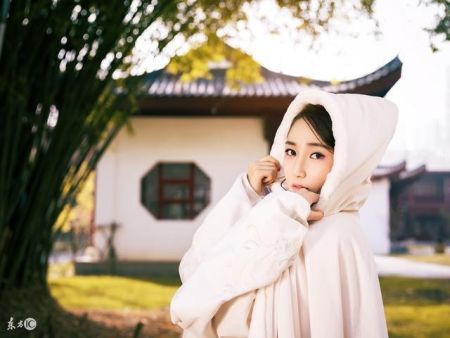山口百惠属相星座,6月是什么星座
山口百惠的英文简介
“Living legend” is a term loosely thrown around; often an exaggeration or an indication only that somebody once did soming spectacular. However to call Momoe Yamaguchi a living legend is in fact a huge understatement. She had a relatively short but incredibly successful career as a singer and actress, and then retired from show business while still wildly popular. Since retiring, she stays away from the media and lives an understated yet elegant life with her husband and children. Her character, her career, her life, are seen by many as more than great, as soming near perfection, and as a result she has been called “the eternal idol”. Momoe Yamaguchi was born in Tokyo on January 17, 1959, and raised in the Yokosuka area near a large US Navy base. She was born out of wedlock, and her father abandoned her and her mother early on. In fact Yamaguchi is her mother’s family name. Her mother brought her and her younger sister Toshie up as a single parent. On top of this, her mother was chronically ill, and as a result the family struggled to get by financially. An often told story is that Momoe delivered newspapers as a child to earn enough money to buy a desk. After seeing the star search television show Star Tanjo, Momoe decided to give it a try herself. She made it onto the show at age 13, placing second. The network that produced Star Tanjo, Nippon Television, teamed with the powerful production house Hori Production to find and promote new stars brought to light by the show. Initially Momoe was teamed with two other young newcomers, Masaki Mori and Junko Sakurada, in a group called Hana No Chusan Trio (Three Flowers Trio). Of the three, Yamaguch was considered by most as the least likely to succeed. Mori was thought to have the bigger and better voice, and Kakurada had a more outgoing, bubbly personality. It was also pointed out that Yamaguchi's legs were thick and without classic curve, and that her personality tended to be on the gloomy side. When the three made their first solo releases, Yamaguchi’s sold the least. Her debut single in 1973, “Toshigoro (Adolescence)" sold a decent but not remarkable 70,000 copies. Her second single, “Aoi Kaijtsu (Green Fruit)” was a huge hit. Part of what made it a success were its suggestive lyrics, which said soming like “if you want me, you can do anything you want to me, and I won’t care if it becomes gossip”. This from a sweet and innocent looking youngster who had showed up to her first recording session in her sailor suit school uniform. Her third single “Hito Natsu No Taiken (One Summer’s Experience”)”, also had suggestive lyrics, roughly “I will give you a girl’s most important thing... it’s okay if you make me cry, it is just once... and then throw me away”. Later in her career she would try to distance herself from these songs, and say that they were not from her heart. However, she was able to build on the popularity gain from these racy songs by then releasing songs that portrayed a strong woman overcoming being used and abused, and now standing up boldly for herself. These songs were called “tsuppari (tough, defiant)” and written by lyricist Yoko Agi and her composer husband Ryodo Usaki. Yamaguchi's management company and record label did not initially support this direction, but she insisted on it and won out. To appease her record label, Yamaguchi also recorded a number of sentimental ballads, which also were very popular. In 1974 she began making movies, starting with Izu No Odoriko (Dancer of Izu). Her co-star in the film was the 22-year old Tomokazu Miura. The two made eleven movies toger, mostly predictable love stories, and in real life also became a couple. The media loved them toger and took to calling them the “golden combination”. The age difference between the two did not bring negative comment, and some fans felt that Miura was a comforting father figure to her, as well as her perfect boyfriend. In 1978 the popular singing trio the Candies announced that they would retire from the entertainment business, and return to being “ordinary girls again”. This seemed to plant a thought with Yamaguchi, who was tiring of the stress of being pushed and pulled through idol stardom. In 1980 she announced her plans to marry Tomokazu Miura, to leave show business, and dedicate herself to her husband and family. While perhaps seen now as old fashioned, the self-sacrificing young woman’s move was at the time seen as an incredibly romantic exit. Her farewell single “Watashi Wa Onna (I Am a Woman)” spoke of her desire to love “with both hands”, touched many hearts, and rocketed to number one. Her husband settled into being a mid-level actor. Beyond writing her autobiography Aoi Toki (Green Time) in 1980, she never looked back, and never was tempted back into the show business spotlight. While she attempts to live a private life, her every public appearance is closely scrutinized. She is looked upon as the ideal housewife, and when spotted by the media every detail of her appearance is closely monitored. She has two sons, who she also tries to keep away from paparazzi. When they first went to school however, coverage of their entering the grounds was the lead story in virtually every media. The career of Momoe Yamaguchi is often compared to that of Seiko Matsuda, who made her debut the year Yamaguchi retired. While both started with a cute and innocent girl-next-door image, Matsuda went on to scandalize the entertainment world by defying her management company and starting her own, having multiple marriages and allegedly countless affairs, dressing sexily and speaking boldly. Yamaguchi demurely gave up superstardom for the man she loved, while Matsuda's image is much more that of a driven, never-say-die career woman. Where Matsuda carries on, despite being well past her peak popularity, Yamaguchi left show business while still at the zenith of her career. Collapse
by Keith Cahoon
===========================================================
The Story of Momoe Yamaguchi
Last Song For You
By Mark Schilling
Some stars rise to greater heights of fan adulation after leaving the stage for good; we miss them more than we thought we would. In addition to the dead legends- James Dean, Marilyn Monroe, Elvis Presley- there are the singers who took early retirement, the groups that split up while still in their musical prime. If the Beatles had stayed toger instead of disbanding in 1970, would the whole world have awaited their latest album with bated breath or with yawns that this collection of rock fossils was still making music toger?
In Japan, the still-living star whose absence has been most lamented by her fans is Momoe Yamaguchi. Even though she hasn't sung in concert, cut a record, or made a movie since 1980, this former queen of Japanese pop music has been a mainstay of the weekly gossip magazines for the past decade and a half. In the early years after her retirement at the age of twenty, few details of her daily existence as wife of actor Tomokazu Miura were too mundane for the mags' Momoe watchers to miss. Her son's postpartum homecoming, nursery school graduation ceremony, and first day at elementary school rated cover headlines- simply because Mom happened to be in the picture.
In recent years, the media harassment has eased, but rumors that Momoe might appear in the 1994 Kohaku Uta Gassen (Red-and-White Song Contest) stirred up a fresh storm of tabloid speculation. There was no truth to the rumors; Momoe had no intention of breaking her silence, but they demonstrated the still-intense public interest in this woman, who has now been a suburban housewife twice as long as she was a teenage "idol" singer.
Momoe became a legend not so much for her talent, though she displayed a three-octave range, as for her public persona, the perfect arc of her career, and her manner of leaving it.
Momoe and her younger sister were raised in a tiny apartment by their chronically ill mother in the seaport of Yokosuka, the site of a big U.S. Navy base. Her family was so poor that Momoe had to deliver newspapers to pay for a study desk. Then, in the summer of 1972, CBS/ Sony record producer Masatoshi Sakai spotted her photo on the desk of the director of Star Tanjo! (Birth of a Star!), a talent-scout show on the NTV network. As Sakai later reminisced, the photo showed a 13-year-old girl wearing a white blouse and a miniskirt. Her legs, he thought, "were thick and misshapen," but there was also a "refreshing purity and firmly rooted boldness" that struck him as unusual- and potentially profitable. Against opposition at CBS/ Sony- many of his fellow talent spotters thought her "gloomy-looking" and "dull"- he persuaded the company to sign her and began grooming her for stardom.
In 1972 Momoe made her debut on Star Tanjo! which not only discovered beginners but launched a lucky few on their way to stardom with repeated TV appearances. NTV had developed Star Tanjo! as a counter to Watanabe Productions, a talent agency whose large stable of groomed-for-TV pop stars enabled it to dominate the airwaves. Watanabe wielded its formidable power like a bludgeon; in 1973 it started its own talent show on rival network NET and announced that its singers would no longer appear on a music show that NTV was broadcasting in the same time slot. When NTV complained, Watanabe bluntly told the net to change the show's scheduling.
From that moment on, it was an all-out war between Watanabe and NTV. Working toger with a rising talent agency, Hori Production, NTV was determined to create its own stars. Momoe thus became more than just another kid singer, but a vital counter in a bitterly contested power struggle. She had to succeed.
Since its start in 1971 Star Tanjo! had already nurtured one star- the 13-year-old Masako Mori- and in 1972 was looking for others. The auditions, held on Sunday from ten in the morning until six in the evening, processed as many as 120 young hopefuls an hour- thirty seconds for each. Momoe passed, and toger with Mori and fellow newcomer Junko Sakurada, soon became known as the Hana No Chusan Trio (The Three Flowers Trio).
Of the three flowers, however, Momoe seemed the least likely to bloom. She didn't have Mori's big, melodious voice or Sakurada's bouncy, vibrant personality. Her 1973 debut single, "Toshigoro" (Adolescence) sold seventy thousand copies- not bad for a beginner, but hardly indicative of a superstar future. Also, her fellow trio members were scoring much bigger numbers for their single releases.
But Momoe's second record, "Aoi Kajitsu" (Green Fruit), rocketed up the charts, as did her third, "Hito Natsu No Taiken" (One Summer's Experience), and her fourth, "Chippoke No Kansho" (A Little Sentimental). One reason was that for a 13-year-old kid, Momoe was singing some pretty hot lyrics. In "Aoi Kajitsu" she told an unnamed lover that "If you want me, I'll let you do anything to me" and in "Hito Natsu No Taiken" announced to that same certain someone that she would "give you a girl's most important thing."
Some called these lyrics exploitation, but they sold records for the young singer, who had showed up for her first recording session in her sailor-suit school uniform. In the latter half of her career Momoe rarely performed her earlier songs- she wrote in her bestselling 1980 autobiography, Aoi Toki (Green Time), that "in my heart I completely rejected them."
Though not conventionally cute or sexy, Momoe had a quietly sultry presence that seemed to belie her years. With her sloe eyes, dusky complexion, direct gaze, and low, husky voice, she came across as a touch exotic, although she never ventured farther from Japan than the Yokosuka bar district catering to U.S. sailors. Without really trying, she was soon melting hearts of teenage boys from Hokkaido to Kyushu.
But what really launched Momoe to stardom and signaled the second stage of her career were the songs written for her by husband-wife team of lyricist Yoko Agi and composer Ryudo Usaki. These so-called "punk" (tsuppari) songs, including "Yokosuka Story" and "Playback Part 2," proclaimed that Momoe was no longer a girl who could be used by men, but a woman ready to stand on her own two feet and take charge of her own life. Initially Momoe's agency and record company had opposed using this pair, saying that their music didn't fit her image, but she had insisted- and changed her image instead.
At the same time, at the urging of Sony Records, she pleased the fans who had liked her softer side with such sentimental ballads as "Ii Hi Tabidachi" (Leaving on a Good Day) and "Aki Zakura" (Fall Cherry Blossoms). These and other tunes reached the top of the charts, but earned her relatively little critical or industry recognition; Momoe never won an industry award in her entire eight-year career. Even so, she never threw a public snit fit over this snub or conducted a Paul McCartney-like campaign for honors. In this and other ways, she was, from beginning to end, a class act.
Momoe's movie career began only a year after her recording debut, in 1974 with the release of Izu No Odoriko (The Izu Dancer). Her costar was a baby-faced unknown named Tomokazu Miura. The movie was the sixth based on the classic Yasunari Kawabata story about an ill-starred romance between a young dancer and a high-school student. Izu No Odoriko was an unimaginable attempt to capitalize on Momoe's popularity as a singing idol, but the two young stars clicked- and soon the public was demanding more of what came to be known as the "golden combination." Momoe and Tomokazu made eleven more pictures toger, all of them moneymakers.
Not surprisingly, given all the time they spent playing on-screen lovers, their romance began to blossom off the set as well as on it. Though Tomokazu was already 22 when he first paired with the 15-year-old Momoe, no eyebrows were raised. As far as their handlers and public were considered, theirs was a match made in box-office heaven.
But though their pairing may have had its start as commerce, Momoe fell hard. For this teenager, whose parents had never married and whose father had performed an early disappearing act, the older Tomokazu represented a firm anchor in a turbulent world. She paid him her greatest compliment when she told record producer Sakai that "he's not like someone from the entertainment business."
As she grew to maturity, the idea of becoming Mrs. Miura and getting out of the pop-music rat race altoger became more attractive. She had always been in the entertainment world, but not of it- a distance that had been part of her appeal. In her autobiography, she wrote that "I didn't like this job..... My singing was turned into work, without any regard for my own wishes. Forced to sing the same song over and over everyday, I came to hate singing."
Then in 1978, a popular trio called The Candies suddenly announced that they were quitting "to become ordinary girls again." Although Momoe was skeptical about their chances of returning to blissful anonymity, their example planted the idea of retirement more firmly in her mind.
In 1980, she finally announced her decision to marry Tomokazu and quit show business. The news hit many of her fans hard. Though they may have applauded her marriage, they regretted her retirement. It meant no more music from Momoe. Why, not a few of them wondered, did it have to be both? Why couldn't she keep singing, as so many other married pop stars had? Momoe, however, had made up her mind to get out, and nothing could change it.
Though to the less understanding her decision may have seemed regrettably old-fashioned- feminists complained that she was setting the women's movement in Japan back by ten years- to millions of her more traditionally minded fans there was soming splendidly self-sacrificial about her exit, like Ingrid Bergman getting on the plane with the good-but-dull Paul Henried instead of hanging around Casablanca with the cynical-but-exciting Humphrey Bogart.
The more perceptive of those fans knew that without Momoe, Tomokazu was just a journeyman pretty-boy actor, whose career would never rise about the middling (they were right- it hasn't). But for the majority, she was doing the pure thing, the right thing, the romantic thing by giving it all up for her man. Her last recording "Watashi Wa Onna" (I Am a Woman), seemed to express this attitude. Momoe sang about wanting to give her love "with both hands." The song shot to number one on the charts.
Momoe went out in a blaze of glory, with her popularity, and her reputation still intact. In a society that celebrated (and still celebrates) the average and conventional, in which women were (and still are) often expected to quit their jobs when they marry or give birth, the decision of this wealthy, famous, and powerful star to join the ranks of the buggy-pushing, grocery-shopping masses underlined, more than any song lyric ever could, her Ms. Averageness. Despite all the perks and temptations of stardom, her fans could say, she was always one of us, will always be one of us. They could conceive of no greater compliment. Her life was also theirs- forever.
This article appears courtesy of Mark Schilling, and it was reprinted from his book "An Encyclopedia Of Japanese Pop Culture." Buy from Amazon
山口百惠是谁?
日本早期影视明星
谁有山口百惠经典好听的歌曲的中文译音?
秋樱
Ko su dei ni no ko su mo su na a ki no hi no
Na yi mei na ni xi do ma ni ni mu ei dei yi lu
Ko no mo no na bi da ko mo lo na a ka da ka na
Mi wa sa ki dei ki do cu sei ki lo su lu。
Dei m na wa dei a lu da mu no mi da yi tei wa
Wa ta xi no o sa na li xi do o mo yi dei mo
Na m mo no o na ji ha na xi ku li ka lei su
Xi ta li o to mi ta li o qi sa na ko ei dei。
Ko m na ko ha lu bi yo li no
O na ya ka na yi wa
a na da no ya sa xi sa nei xi mi dei ku lu
a xi wa to ko no wa ta xi ni
hu do o wa xi dei ba
wa li ba da xi do kin dai nio xi pei yi da na yi do wa da ta
a lei ko lei to o mo yi dei o ta do o ta la
yi cu na ki mo xi do li dei wa na ka a da do
yi mo sa la na X la wa da na X la wa ta xi
ku qi li o do come dei yi ma su。
ha xi ta lei no yi cu ku li ni dei o ka li dei
xi ba la ku wa a na xi dei mo yi ka tei lei do
to cu zei m na mi da ko bo xi dei i ki dei to
nan do nan do ku li kai su ha ha 。
a li X ko o no ko to bo
ka mi xi mei na X la
yi ki dei mi ma su wa da xi na yi li
ko mu na ko ha lu bi yo li no
O na ya ka na yi wa
o su go xi a na da no ko do mo dei yi sa sei tei ku da sa yi
山口百惠的资料
山口百惠
生日:1959年1月17日
星座:牧羊座 血型:O型
身高:1.61米
难忘的事情:小时卖报纸养家
常到的地方:摄影棚、录音室
最喜欢的运动:游泳、打网球
最喜欢的乐器:口琴
最喜爱的季节:夏季
最喜欢的颜色:白色
最喜欢的歌手:美空云雀
最喜欢的动物:小鸟
最喜欢的节日:复活节
最喜爱的国家:意大利
嗜好:布拼艺术、收集裙子
演出的影片:http://zbinfo.net/2002/base/zhuanti/20030602/index.htm
6月出生是什么星座
星座是按阳历(公历)日期划分的,首先你得知道你的阳历出生日期,然后对照下面的资料。
白羊座:3月21日 - 4月20日
金牛座:4月21日 - 5月21日
双子座:5月22日 - 6月21日
巨蟹座:6月22日 - 7月22日
狮子座:7月23日 - 8月23日
处女座:8月24日 - 9月23日
天秤座:9月24日 - 10月23日
天蝎座:10月24日 - 11月22日
射手座:11月23日 - 12月21日
魔羯座:12月22日 - 1月20日
水瓶座:1月21日 - 2月19日
双鱼座:2月20日 - 3月20日
6月是什么星座
双子或者巨蟹。如果你在6.22号(包括这一天)后,就是巨蟹。星座按阳历生日算哦
天蝎座跟射手座可以是情侣吗,射手座最佳配对
阅读导航1、天蝎座与射手座能成为情侣吗2、天蝎座和射手座相配吗?3、天蝎座的女生和射手座的男生相配吗?4、天蝎座和射手做可以做恋人么5、和射手座最配的星座是什么?6、射手和哪个星座最配?天蝎座与射手座能成为情侣吗000087年属兔女2023年桃花运,87年属兔爱情运势
阅读导航1、1975年属兔女49岁七月二十九本命年运势?2、1987年属兔女2023年全年运势怎么样?3、87年兔2023年运势如何?4、能吸引到很多异性的注意,魅力无穷的生肖女有哪几个?5、87年男性单身者这几年有桃花运吗6、87年十一月农历初九属兔33岁今年的桃花运怎么样?1975年属兔女49岁七月二十九本命年运势?0000房子和主人属性相克,房屋坐向和主人相冲怎么办
阅读导航1、房子方位属金,住户命格属火是相生还是相克?2、房子的风水跟个人的五行有什么相生相克的关系吗?3、房子的风水跟个人的五行有什么相生相克的关系吗?4、请问大师怎样破解楼层五行与主命五行相克?多谢!5、楼层与属相五行相克如何化解6、楼层与主人五行相克如何化解?房子方位属金,住户命格属火是相生还是相克?0000梦到老公算命命不好,梦见和老公一起去算命
阅读导航1、梦见老公算命命不好2、周公解梦梦到算命先生说老公还有俩三年的寿命3、我梦见一个人给我算命说我这辈命不好是咋回事4、梦见算命先生说我命不好?5、梦见算命先生说我还有两三个月的寿命,求解答…6、梦到神婆给我算命说我命不久矣,最多活一年梦见老公算命命不好梦是反的周公解梦梦到算命先生说老公还有俩三年的寿命0000八字胎生元命什么意思,元亨利贞四柱八字排盘详解析
阅读导航1、请高人指点我的八字,五行2、可以看下此人的八字如何?是属五行中的什么命呢?3、我的生辰八字怎么样?求解,懂的人来!4、批一下八字算命5、中贵,显贵,大贵在命理是什么意思?6、命书说命主显贵是什么意思请高人指点我的八字,五行0000











